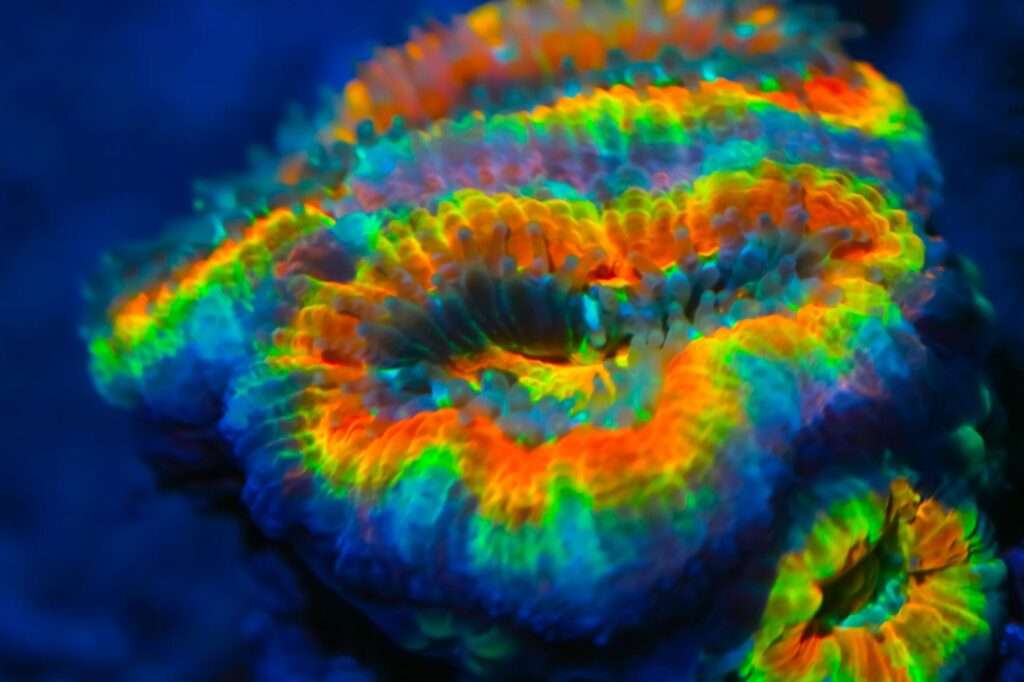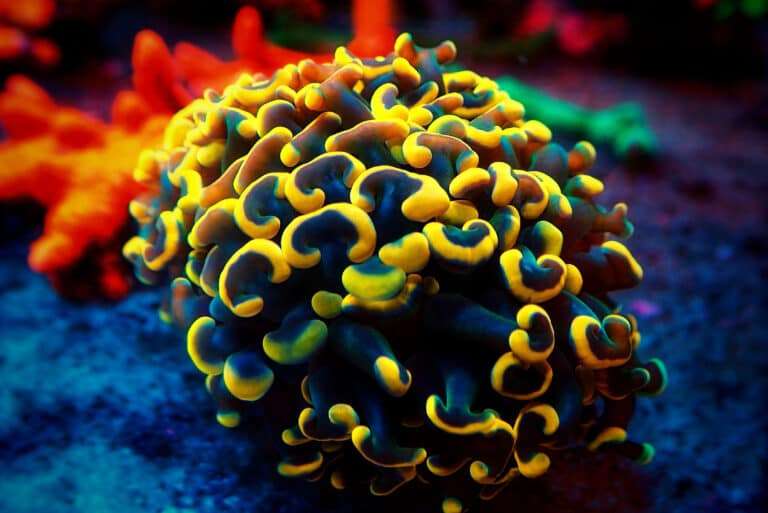
A Plate Coral its genus only contains one species, Heliofungia actiniformis. Due to the fact that their skeletons only differ in small details, it was once believed to be a subspecies of the genus Fungia. These corals typically live in calm lagoons with shallow water and muddy or sandy bottoms on the reef.
The Long Tentacle Plate Coral is another name for the plate coral. It resembles the Disk Coral Fungia sp. in appearance, but may be clearly distinguished thanks to its broad, lengthy tentacles that are crowned with knobby points. They may seem bright green, deep purple, or yellow, but are often brown or olive with white tips. Also typical are pink tentacle tips and solid pink tentacles.
Habitat
H. actiniformis can be found in the Indian Ocean, which stretches from India to the Tropical Western Pacific. They are often found in shallow seas up to 131 feet deep in reef lagoons (40 m). They have the capacity to “unbury” themselves from the substrate when it becomes covered with sediment. If they are flipped over, they have the ability to right themselves. This is accomplished by allowing their tissue to absorb a significant amount of water, making them buoyant, and then using the water current as their means of propulsion.
Morphology
The free-living polyp known as the Plate Coral (H. actiniformis) has tentacles that are so long that they obscure its skeletal framework. At first appearance, they may be mistaken for an anemone. They can be either round or oval in shape, and they can have an arch in the centre or not. The mouth can be up to 1″ (3 cm) broad and they can grow up to 8″ (20 cm) in length. Unknown life expectancy. The Fungia genus has much more vivid colors than the Long Tentacle Plate Coral. Their mouths or oral discs are all striped. Their tentacles’ contrasting tips can be white, pink, yellow, gray, violet, green, or other colors.
In Captivity

- Feeding
Heliofungia corals have evolved a number of feeding techniques. Many of its nutrients are obtained through a symbiotic interaction with a sea algae called zooxanthellae. They can also take in dissolved organic substances and planktonic creatures as well as food particles from the water column. These corals require daily feeding in captivity, and they may require even more food than the Fungia genus. Shredded meat, including mysis, can be fed to them. Try to feed the coral the entire organism when using larger meals.
The Faviidae family’s genus and species coexist peacefully with the Heliofungia coral. However, because its tentacles are so lengthy, it can be somewhat hostile with other corals. It is advisable to only keep its kin corals on the substrate because it can also move a little bit. Sadly, other corals sting the Plate Corals more frequently, and they typically do not recover from these stings. Keep in mind that the Plate Coral may be able to consume small and ill fish if housed with these corals. Additionally, because the tentacles of the plate coral resemble anemones, butterfly fish may nibble on them.
Table





